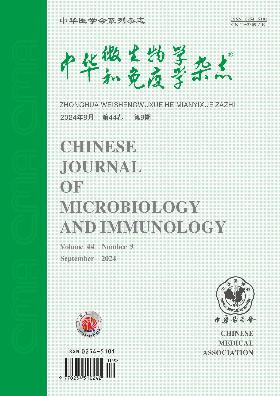细胞培养的H5N1型流感病毒的纯化方法
Q4 Immunology and Microbiology
引用次数: 0
摘要
目的减少H5N1甲型流感病毒制备过程中宿主细胞的残留蛋白和DNA。方法先用Core 700去除宿主细胞残留蛋白,再用Capto Q去除宿主细胞DNA。用该方法纯化了几批在Madin-Darby犬肾(MDCK)细胞中培养的H5N1甲型流感病毒。采用实时荧光定量PCR、血凝试验、单径向免疫扩散等方法对纯化效果进行评价。并以苯并酶核酸酶进行比较。结果在不使用苯并酶核酸酶的情况下,宿主细胞DNA和残留蛋白的总去除率分别为99.62%和98.1%,HA抗原回收率为66.96%。结论本研究建立了一种具有良好效果的细胞流感疫苗纯化策略。能有效去除宿主细胞DNA和蛋白质,实现高血凝素回收率。纯化结果不逊于添加苯并酶核酸酶的纯化结果,提示其在实际疫苗生产中的应用潜力。关键词:流感病毒;MDCK细胞;宿主细胞蛋白;宿主细胞DNA;净化本文章由计算机程序翻译,如有差异,请以英文原文为准。
Purification method for cell-cultured influenza virus H5N1
Objective
To reduce the residual proteins and DNA of host cells in the preparation of H5N1 influenza A virus.
Methods
Core 700 was firstly used to remove residual host cell proteins, and then Capto Q was used to remove host cell DNA. Several batches of H5N1 influenza A virus cultured in Madin-Darby canine kidney (MDCK) cells were purified using this method. The efficiency of purification was evaluated using many methods including quantitative real-time PCR, hemagglutination (HA) test and single radial immunodiffusion assay. Moreover, Benzonase nuclease was used for comparison.
Results
Without the use of Benzonase nuclease, the overall removal rates of host cell DNA and residual proteins were 99.62% and 98.1%, and the HA antigen recovery rate was 66.96%.
Conclusions
This study established a purification strategy with good effect for cell-based influenza vaccines. It can efficiently remove host cell DNA and proteins and achieve a high HA recovery rate. The purification result is no worse than that of adding Benzonase nuclease, suggesting the potential of its application in actual vaccine production.
Key words:
Influenza virus; MDCK cells; Host cell protein; Host cell DNA; Purification
求助全文
通过发布文献求助,成功后即可免费获取论文全文。
去求助
来源期刊

中华微生物学和免疫学杂志
Immunology and Microbiology-Virology
CiteScore
0.50
自引率
0.00%
发文量
6906
期刊介绍:
Chinese Journal of Microbiology and Immunology established in 1981. It is one of the series of journal sponsored by Chinese Medical Association. The aim of this journal is to spread and exchange the scientific achievements and practical experience in order to promote the development of medical microbiology and immunology. Its main contents comprise academic thesis, brief reports, reviews, summaries, news of meetings, book reviews and trends of home and abroad in this field. The distinguishing feature of the journal is to give the priority to the reports on the research of basic theory, and take account of the reports on clinical and practical skills.
 求助内容:
求助内容: 应助结果提醒方式:
应助结果提醒方式:


